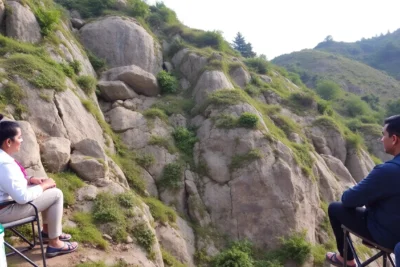
- Exploring the Architectural Wonders of the Sagrada Familia in Barcelona
- Top Tips for a Free Visit to the Sagrada Familia
- Understanding the Symbolism Behind the Sagrada Familia's Design
- Best Times to Visit the Sagrada Familia for Fewer Crowds
- Discovering the History of the Sagrada Familia: A Must-See Landmark
- Essential Guide to Navigating the Sagrada Familia Without a Ticket
The Sagrada Familia stands as a testament to the genius of architect Antoni Gaudí, captivating visitors with its intricate designs and towering spires. This iconic basilica, still under construction, offers a unique glimpse into the fusion of art and spirituality that defines Barcelona.
In this article, we will delve into **Exploring the Majestic Sagrada Familia in Barcelona: Tips for a Free Visit**, providing you with essential insights on how to experience this architectural marvel without spending a dime. Whether you’re an art enthusiast or a casual traveler, these tips will help you make the most of your visit while appreciating the beauty of Gaudí’s masterpiece.
Exploring the Architectural Wonders of the Sagrada Familia in Barcelona
The Sagrada Familia is not just a religious structure; it is a architectural marvel that embodies the innovative spirit of Antoni Gaudí. The basilica features a stunning blend of Gothic and Art Nouveau styles, creating a visual narrative that captures the essence of nature and spirituality. From the ornate facades to the intricate sculptures, each aspect tells a story, making it a wonder worth exploring for both architecture lovers and casual visitors.
One of the most striking elements of the Sagrada Familia is its towering spires, which represent the twelve apostles. As you approach the basilica, take a moment to admire the details of each spire, which reach heights of up to 170 meters. The use of light and color within the interior is another remarkable feature, enhanced by the stained glass windows that create a kaleidoscope of hues as sunlight filters through, illuminating the sacred space in a divine manner.
For those interested in the historical significance of the Sagrada Familia, consider these key facts:
- Construction began: 1882
- Expected completion date: 2026 (marking Gaudí's centenary)
- Architectural style: Catalan Modernism
- Number of spires planned: 18
As you wander through the basilica, be sure to contemplate the symbolism in Gaudí's designs. Many elements are inspired by nature, including the tree-like columns that support the ceiling, creating a sense of being in a forest. This unique approach not only showcases Gaudí's artistic vision but also offers a serene environment for reflection, making your visit a truly enriching experience.
Top Tips for a Free Visit to the Sagrada Familia
To enjoy a free visit to the Sagrada Familia, timing is crucial. The best times to explore the basilica without purchasing a ticket are during the early morning or late afternoon, especially on weekdays. This not only allows you to avoid the crowds but also offers a chance to appreciate the architectural details in softer, natural light. Consider visiting on a Sunday, as local masses are held, and entry is often free for those attending the service.
Another tip for a budget-friendly experience is to take advantage of the surrounding areas. The park nearby, Parc de la Ciutadella, provides stunning views of the Sagrada Familia and is perfect for a picnic. Additionally, walking around the neighborhood allows you to soak in the unique atmosphere of Barcelona, filled with street art and local artisans. Make sure to capture some memorable photos from different angles!
For those interested in the history and architecture, consider downloading a free audio guide or using a mobile app. Many resources offer detailed information about the basilica's design and significant features. Furthermore, joining a free walking tour can enhance your understanding of Gaudí's vision while allowing you to connect with fellow travelers.
Lastly, don’t overlook the opportunity to engage with local guides outside the Sagrada Familia. Often, they share fascinating stories and insights that you might not find in a typical guidebook. This way, you can deepen your appreciation for this magnificent landmark without any cost, making your visit to the Sagrada Familia truly unforgettable.
Understanding the Symbolism Behind the Sagrada Familia's Design
The Sagrada Familia is steeped in rich symbolism, with each architectural element designed to convey profound spiritual meanings. Gaudí believed that architecture should reflect the divine, and he infused every aspect of the basilica with significant messages. The interplay of light and form is not merely decorative; it serves to create a sacred atmosphere that invites contemplation and awe.
One of the most notable symbols is the tree-like columns inside the basilica, which represent a forest canopy, reflecting Gaudí's deep appreciation of nature. These columns are not just structural; they symbolize the connection between the divine and the natural world, creating a peaceful sanctuary for visitors. Other elements that embody this philosophy include:
- The Nativity Facade: Illustrates the birth of Christ, representing joy and hope.
- The Passion Facade: Depicts Christ's suffering, serving as a reminder of sacrifice and redemption.
- The geometrical forms: Reflect aspects of the universe, emphasizing harmony and balance.
Within the grand design, the number of spires has significant meaning as well. The 18 spires represent various biblical figures, including the Virgin Mary, the apostles, and the evangelists. This arrangement not only contributes to the stunning skyline of Barcelona but also serves as a visual representation of faith and devotion, guiding the eye upwards toward the heavens.
In summary, the Sagrada Familia’s design is a masterful blend of artistry and spirituality, where every detail holds a purpose. Visitors are encouraged to take a moment to reflect on these symbols, enhancing their appreciation of this architectural wonder. Understanding the deeper meanings behind Gaudí's vision can transform a simple visit into a profound spiritual experience.
Best Times to Visit the Sagrada Familia for Fewer Crowds
To enjoy the Sagrada Familia with fewer crowds, consider visiting during the off-peak hours. Early mornings, right when the basilica opens, are often the best times to experience the site with a sense of tranquility. Not only can you take in the breathtaking architecture, but you will also have the opportunity to photograph the stunning facades without the usual throngs of tourists.
Additionally, weekdays are generally less crowded than weekends. If you can, plan your visit for a Wednesday or Thursday. These mid-week days attract fewer visitors, allowing for a more intimate experience as you explore the intricate details that Gaudí incorporated into his design.
Another excellent time to visit is during the late afternoon hours, particularly close to closing time. As the sun begins to set, the light casts a magical glow on the basilica, enhancing its beauty. This also coincides with a decrease in foot traffic, making it easier to enjoy the space in a more personal way.
Lastly, consider visiting during the off-season, which typically runs from November to March. While the weather may be cooler, the Sagrada Familia is significantly less crowded during these months. This can provide a unique perspective on the basilica, allowing you to truly appreciate its grandeur without the usual hustle and bustle of peak tourist seasons.
Discovering the History of the Sagrada Familia: A Must-See Landmark
The history of the Sagrada Familia is a captivating tale that spans over a century, beginning with its groundbreaking in 1882. Originally designed by Francisco de Paula del Villar, the project took a dramatic turn when Antoni Gaudí took over the reins in 1883. His visionary approach transformed the basilica into a masterpiece that reflects his deep religious faith and passion for nature, making it an essential landmark in Barcelona.
As you explore this iconic structure, it's important to note that the Sagrada Familia is still under construction, with an anticipated completion date set for 2026, coinciding with the centenary of Gaudí's death. This ongoing development is a testament to the complexity and ambition of Gaudí's design, which incorporates elements that defy conventional architectural norms. The blend of Gothic and Art Nouveau styles results in a building that feels both ancient and futuristic.
The basilica's design serves not only as a religious symbol but also as a reflection of Gaudí's philosophy that nature and architecture are intertwined. Each facade tells a different story; for instance, the Nativity Façade celebrates the birth of Christ, while the Passion Façade conveys the suffering and sacrifice of Jesus. This duality enhances its significance, appealing to visitors not just as a tourist destination but as a spiritual journey.
Additionally, the Sagrada Familia has garnered worldwide recognition, earning a UNESCO World Heritage designation in 2005. This accolade emphasizes its cultural importance and the artistic brilliance of Gaudí. As you stand in awe of its towering spires and intricate detailing, you become part of a rich history that continues to evolve, making the Sagrada Familia a must-see landmark that embodies the spirit of Barcelona.
Visiting the Sagrada Familia without a ticket can be an enriching experience if you plan your trip wisely. Start by exploring the beautiful Parc de la Ciutadella, which offers picturesque views of the basilica. This park is a great spot for photography and a lovely place to relax before or after your visit. Additionally, wandering through the surrounding streets can unveil hidden gems of local culture, including street art and unique shops.
Another essential aspect of navigating the Sagrada Familia without a ticket is timing your visit. Aim to arrive during off-peak hours, such as early mornings or late afternoons. This strategy not only helps avoid the large crowds but also allows you to appreciate the stunning architecture in the soft morning or evening light. Sundays are particularly special, as attending a local mass can grant you free access to the basilica.
To enhance your understanding of the Sagrada Familia while saving money, consider utilizing free resources. Many smartphone apps and online platforms offer guided tours and detailed information about the basilica's intricate designs and history. Additionally, free walking tours can provide valuable insights into Gaudí's artistic vision, enriching your experience without any cost.
Lastly, don't forget to engage with local guides who often gather outside the basilica. They can share fascinating stories and anecdotes that provide a deeper context to your visit. This interaction not only enhances your appreciation of this magnificent landmark but also connects you with the vibrant community surrounding the Sagrada Familia, making your visit both memorable and insightful.
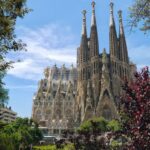 The Unfinished Enigma of Sagrada Familia: Barcelona's Architectural Marvel
The Unfinished Enigma of Sagrada Familia: Barcelona's Architectural Marvel Zed Restaurant: A Culinary Delight near Sagrada Família in Barcelona
Zed Restaurant: A Culinary Delight near Sagrada Família in Barcelona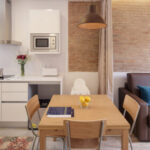 Unforgettable Stay at Hotel Sagrada Familia in Barcelona, Spain
Unforgettable Stay at Hotel Sagrada Familia in Barcelona, Spain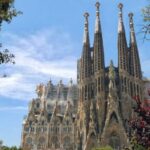 Exploring the Majestic Sagrada Familia in Barcelona for Free
Exploring the Majestic Sagrada Familia in Barcelona for FreeIf you want to know other articles similar to Exploring the Majestic Sagrada Familia in Barcelona: Tips for a Free Visit you can visit the category Blog.
Deja una respuesta

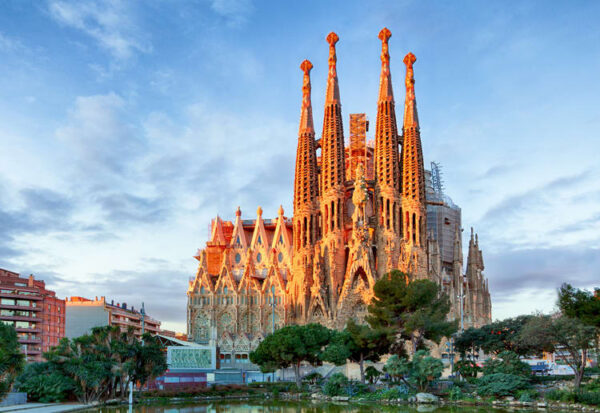
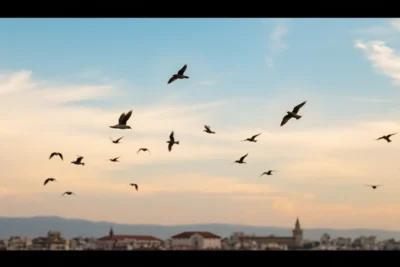



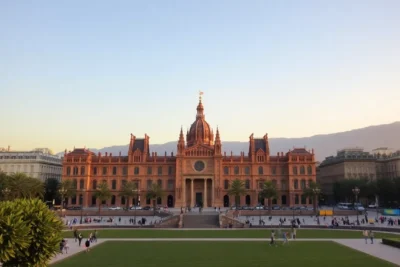

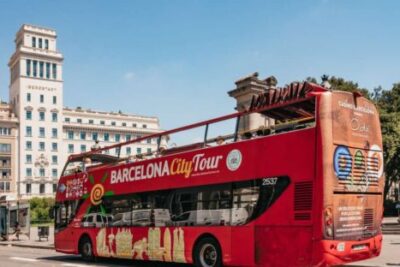
Read more!